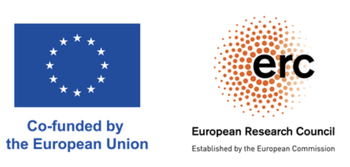We intend to investigate the following field and to answer to the following research questions:

Legal text serialization is only one of the multiple representations of the legal normative content (e.g., oral, picture). The Law is a complex set of ingredients: law-making process, legal actions, legal speech acts (e.g., text), political nuances (e.g., intention of the legislator), cultural elements (e.g., a concept changes over time) linguistic implicit background (e.g., new terms), different signifieds (e.g., interpretation), logic formula (e.g., commands). This project investigates the theoretical relationship between normative statements, textual provisions, logic formula, non-linguistic formats, programming coding of legal rules with the aim to define, and model, objectivity and subjectivity, explicit and implicit, linguistic and non-linguistic in relation of Legal Sources (e.g., Official Gazette). RQ1: can we produce a solid theory of law that allows to produce legal sources and legal normative propositions in machine-consumable format valid, authentic, equally expressive, and persistent over the time with the same preeminence of the textual linguistic acts? And under which theoretical principles and conditions this is possible, including the consolidation versions generated by the diachronic legal system (e.g., retroactive, suspensions, derogation, annulment)? RQ2: can we mitigate the reductionism of the logic formula serialization of the legal norms to preserve the flexibility of the different ontological signifieds in a diachronic process?

According to the legal hermeneutical approach, no meaning determination is ever understood to be fixed (Leyh 1992, MacCormick, Raz, Ross, Hart, Bix). The juridical decision can be rationally founded and be subject to numerous constraints and criteria external to positive law and not derivable from the legal text with rigorous logical operations. In this sense, a Constitution is irreducible to a set of guidelines for future lawmakers demanding literal compliance (Cross 2013; Balkin 2011; Goodwin 2010). The approach to start from the text to code or the opposite from the code to text, does not consider the interpretation theory neither the realism nor the pragmatic experiences. We suggest integrating the two visions by proposing a new approach based on the interactive dialogue between software applications (text and code). While doing so, we also propose to implement the explicability of the AI (Guidotti 2018) by relying on argumentation theory in order to inject interpretation values in the computable system (Sartor, Prakken, Governatori, Rotolo, Boella, van der Torre, van Engers). Computer science can help with its techniques (XML standards, Linked Open data, AI and Law, Legal reasoning, ML/DL, Extraction of the Knowledge, NLP and NER, Dialog and Interactive Systems, pattern detection, etc.) to model a framework where to include flexibility of interpretation to prevent the crystallisation of the law in rigid coding not sensitive to conditions (e.g., jurisdiction, time, social context). RQ3: how we can produce a computer science framework (set of technical requirements) that includes also the legal hermeneutic principles in the formalization under programming (e.g., logic, standard) of the Law? RQ4: how to make eLegal System dynamic over the time and continuously using interactive dialogue with the context of the user (e.g., dynamic normative references over the time, link to correct legal concepts over the time)?

If we need to shift from the text to the code or from the code to the text it is fundamental to investigate the relationship between language and law, and in general between signs and legal norms. There is a dense debate on the language of law (Oppenheim, Hart, Bobbio, Ross, Scarpelli, Olivecrona, Conte, Kalinowski, Wróblewski, Marmor, Schauer) and how an abstract statement (norm) is transformed in textual proposition (speech acts) and how it evolves over time (e.g., interpretation), and finally how logic language can model it in a formal manner. The newly developed format of smart contracts has emerged. It is immediately executable, thus the translation from the text to the code being a crucial step. We intend to involve computational linguists and semiotic experts working with philosophers of law to investigate the proxy role of the legal language in the normative and prescriptive action. We need to understand which methodology is solid enough to guarantee a correct translation to not to manipulate or degrade the legal knowledge. RQ5: is the natural language convertible in another programming language without losing legal knowledge and semantic? RQ6: is it possible to translate legal norms in visual symbols or in experience (e.g., augmented reality) to better communicate with the end user?

We intend to investigate the constitutional and parliamentary law perspective (Lupo 2020, Pollicino 2021) in case we want to support the thesis that the coding law is a legitimate, authentic, and official Legal Source (like the text in the Official Gazette). We want to also investigate the implications of this paradigm shift in all the legal system workflow, including the judiciary system. It is also important to understand the enforceability of the consumable-Law and whether emerging technology (e.g., smart contract) permits to implement automatic enforceability (e-enforceability). RQ7: which constitutional and parliamentary foundations are necessary to implement a machine-consumable approach in law-making system? RQ8: which enforceability principles are necessary for the machine-consumable automatic law enforceability (e-enforceability)?

We want to investigate which simplification forms we can adopt to visualize the machine-consumable law in a human-consumable manner for implementing simplification, better regulation principles, transparency, and accessibility. Visualization is another form of translation of the legal norms (like the logic formula and the language codification), so we need to understand which Human-Computer-Interaction instruments we can use to implement the Legal Design principles and preserve the normative message. Finally, we need to also investigate the role of “explicit non-linguistic norms.” RQ9: which foundations of philosophy of law and semiotics are necessary for preserving the ontological meaning of the law norm when it is translated in visual symbols? RQ10: which Legal Design/HCI methods should we develop for making the law “better” and “simple” but in the meantime to not lose in semantic and in expressivity?
